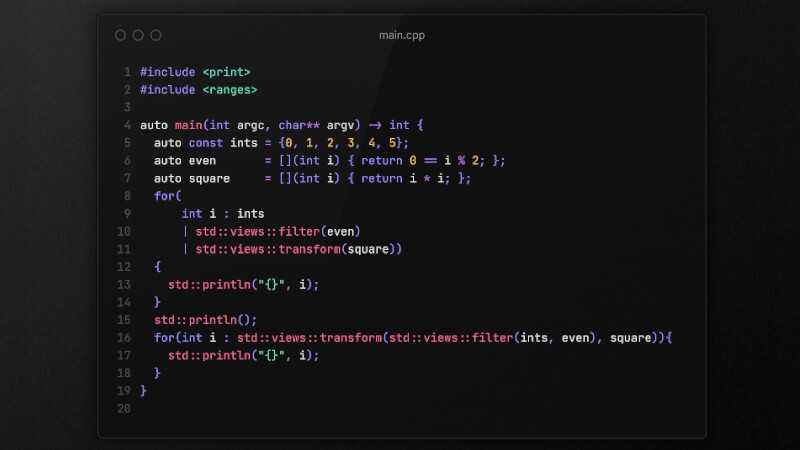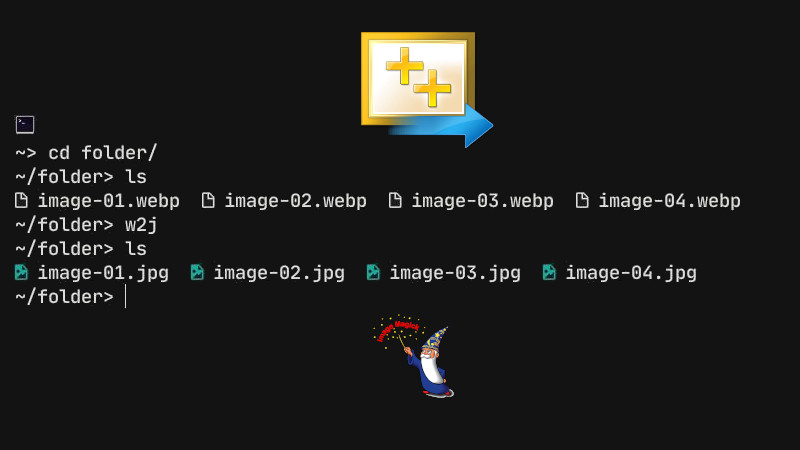
The Entity Component System (ECS) pattern is widely used in game development and modular logic applications. It separates data (components), behavior (systems), and entities (IDs).
Its structure can be summarized as:
- Entity: just an ID (e.g.,
Player = 1) - Component: pure data (e.g.,
Position,Velocity,Health) - System: logic that operates on entities with certain components (e.g., physics system uses
PositionandVelocity)
Advantages:
- Performance: cache-friendly, contiguous memory access
- Flexibility: add/remove behaviors without inheritance or conditionals
- Scalability: easy to manage hundreds/thousands of entities
- Organization: clear separation of data and logic
Simple example:
struct Position { float x, y; };
struct Velocity { float dx, dy; };
for (auto entity : entities_with<Position, Velocity>()) {
entity.Position.x += entity.Velocity.dx;
entity.Position.y += entity.Velocity.dy;
}Common use cases:
- Physics simulations
- Particle systems
- Entity-based AI
Below is a list of the 12 best ECS libraries in C++, including descriptions, pros and cons, real project usage, and GitHub links.
01. ecs.hpp
Single-header ECS library, written in C++14. Extremely simple to integrate and use.
Pros:
- Simple and lightweight
- Easy integration
- No external dependencies
Cons:
- Lacks advanced features
- No multithreading or cache optimizations
Known uses: Educational projects and small indie games
02. ecst
Experimental ECS fully based on C++14, focused on performance and compile-time parallelism.
Pros:
- Automatic parallelism
- Heavy metaprogramming
- Compile-time optimizations
Cons:
- Complex to use
- Sparse documentation
- Not beginner-friendly
Known uses: Academic performance demos and benchmarks
03. EntityFu
Simple and efficient ECS focused on speed.
Pros:
- Very fast
- Clean, readable code
- Good for learning
Cons:
- Inactive project
- Few examples and scarce documentation
Known uses: Educational games and prototypes
04. EntityPlus
C++14 ECS with a modular approach, ideal for mid-sized games.
Pros:
- Clear structure
- Modern design
- Easy to extend
Cons:
- Low adoption
- No public benchmarks
Known uses: Indie games and personal experiments
05. entityx
Mature and widely used ECS.
Pros:
- Broad adoption
- Well-tested and documented
- Easy to use with event support
Cons:
- Not the fastest
- Few recent updates
Known uses:
- Cryptark (Alientrap)
- Several indie games and custom engines
06. entt
One of the most popular and fastest ECS libraries. Written in C++17.
Pros:
- Extremely fast and optimized
- Supports multithreading, snapshots, events
- Used in real engines
Cons:
- Steeper learning curve
- Requires at least C++17
Known uses:
- Open 3D Engine (Amazon)
- The Machinery Engine
- Many custom engines
07. gaia-ecs
Archetype-based ECS, highly optimized and modern.
Pros:
- Excellent cache locality
- High performance
- Minimalist design
Cons:
- API still maturing
- Small community
Known uses: Custom engines and experimentation
08. ginseng
Game-oriented ECS, simple and inspired by practical usage.
Pros:
- Clear interface
- Easy to understand and apply
- C++11 compatible
Cons:
- No support for advanced features
- Low visibility project
Known uses: Game prototyping
09. goomy
Extremely small and experimental ECS.
Pros:
- Minimalist code
- Ideal for studying ECS pattern
Cons:
- Not production-ready
- Lacks essential features
Known uses: Research and learning
10. kengine
Full game engine with integrated ECS architecture.
Pros:
- Includes tools beyond ECS (rendering, scripting, etc.)
- Highly customizable ECS
- Modular
Cons:
- High complexity
- Sparse external documentation
Known uses: Author’s own engine for C++ games
11. matter
Modern ECS with C++17/20 support, focused on elegance and performance.
Pros:
- Concise design
- Modern architecture
- Easy to integrate
Cons:
- Small community
- Documentation could be better
Known uses: Custom engine development
12. mustache
Fast, modern ECS with simple syntax.
Pros:
- Lightweight and fast
- Easy to use
- Modern C++
Cons:
- Relatively new project
- Little community feedback
Known uses: Small games and prototypes
If you’re looking for:
- Performance and production: go with entt or Gaia-ECS
- Simplicity: ecs.hpp or EntityFu
- Multithreading and compile-time: ecst
- Full engine: Kengine
Bonus:
Built together with C
- Flecs - http://github.com/SanderMertens/flecs
- pico_ecs - https://github.com/empyreanx/pico_headers
Choosing the right ECS depends on your experience level, project scope, and performance needs. All listed projects are open-source and available on GitHub for exploration and contribution.




